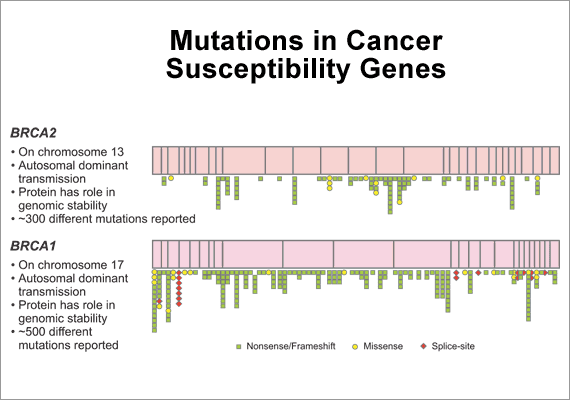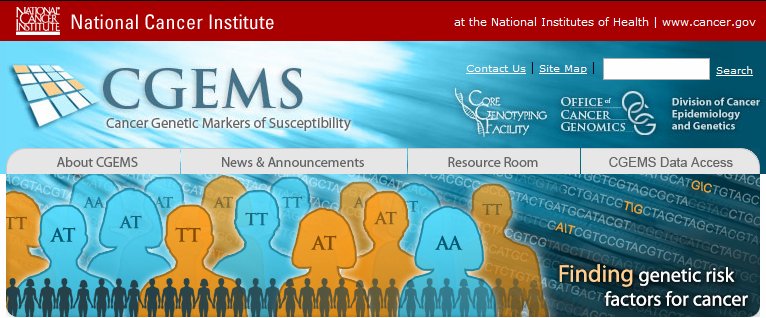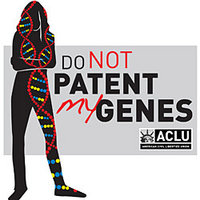Detection
The Breast Cancer Genes While researchers are on a mission to map more of the genetic variations that are linked to cancer, some have already been found. In 1994 scientist discovered the BRCA1 gene located on chromosome 17. A year later, BRCA2 was discovered. (83) These genes belong to a class known as tumor suppressors. Mutations in these genes have been linked to hereditary breast and ovarian cancer. (84) DNA sequencing allows for women to test and see if they inherited this mutation, which allows for early detection and early treatment.
|  |
 | CGEMS In 2005 the Cancer Genetic Markers of Susceptibility project was launched. The goal of the project is to identify common inherited genetic variations associated with risk for breast and prostate cancer. (85) Click on the image for a link to the home page, to learn more about CGEMS. |
New Treatments
As the DNA sequencing technology advances, there is no shortage of the information being discovered about genetics and disease. Applying all this into treatments is a little bit of a slower process, however some researchers have found very useful ways to use the technology.
In 2010, researchers at John Hopkins University developed a blood test based on the DNA of tumors that could help shape treatment for individual cancer patients. They sequenced the DNA of the actual tumor tissue looking not for tiny DNA changes but rearrangements in big areas of the tumor cell's genome. The DNA of the tumor cells vary greatly from the DNA of the normal tissue. The cancer cell's DNA can be used as a "fingerprint" of the cancer. The research suggest that by testing the blood of a patient for this "fingerprint", doctors will be able to tell whether a patient being treated is free of the disease or needs additional or more aggressive care. (86) According to an article written on the study, "The report represents one of the most tangible examples yet of how the ability to sequence a person's entire genetic code could have a direct impact on patient care." (86) With the rapid and cheap DNA sequencing technologies, scanning the DNA in the blood stream to detect any presence of mutated cancer DNA could be a very effective way of monitoring a patients condition.
|  The percentage of how often Breast Cancer is Hereditary (87)
|


